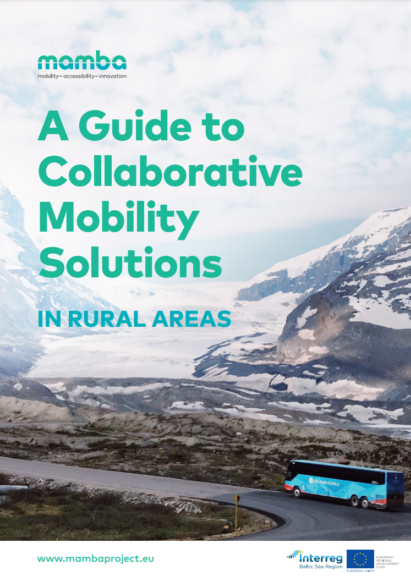Are you living in a rural area? Do you experience unfavourable mobility and accessibility conditions?
Do you want to do something about the situation? If the answer is ‘yes’, then this manual is for you.
It provides guidance on how grassroots actors and the public sector can work together to tackle mobility challenges in their rural areas. Working together in this way allows you to: gain a deeper understanding of residents’ needs; maximise and leverage the resources available to grassroots and public sector actors; and develop more creative, efficient and cost-effective mobility solutions that are well-used and sustainable in the long-term. Whether you are trying to initiate, coordinate or implement a collaborative mobility solution, this guide will help show you ways to do it.
With decreasing and ageing populations in many rural parts of the Baltic Sea Region, it is becoming increasingly difficult to maintain public transport and other services that depend on mobility, such as care at home and home deliveries. This reduced accessibility of services impacts the quality of life of people living outside urban centres. The prospects for such regions seem grim at first sight. Adverse, self-reinforcing and interdependent processes (e.g. ageing populations, outward migration, unfavourable economic conditions, strained municipal budgets) are pulling many remote regions all over Europe into a self-perpetuating “circle of decline” that has a negative impact on the quality of life in rural areas. Looking more closely, however, there is ample hidden potential just waiting to be developed (in the form of existing social networks, resources and infrastructure), all within reach of local community actors and the public sector.
The MAMBA project aims to meet this challenge by promoting sustainable “people-to-service” and “service-to-people” mobility solutions in rural areas. In practice, the MAMBA partners have worked together to improve the integration of existing mobility structures with innovative mobility solutions such as citizen buses, mobility as a service (MaaS) and ridesharing applications. Their goal has been to maximise mobility and the accessibility of services in rural regions while involving users in the process. Ultimately, MAMBA showcases how small interventions — based on creativity, innovation, commitment and passion — can effect change and counteract this (vicious) circle.










